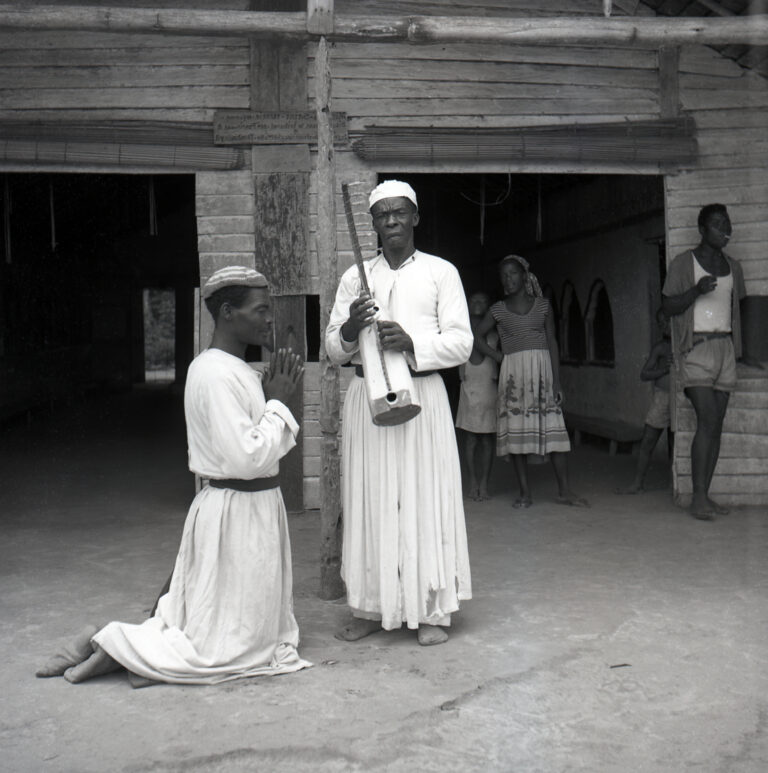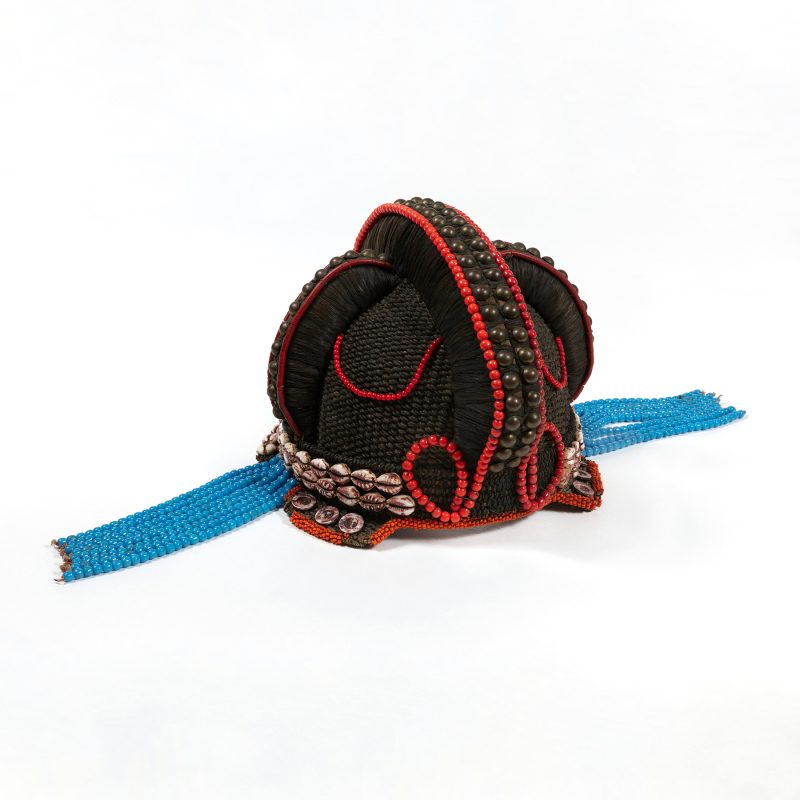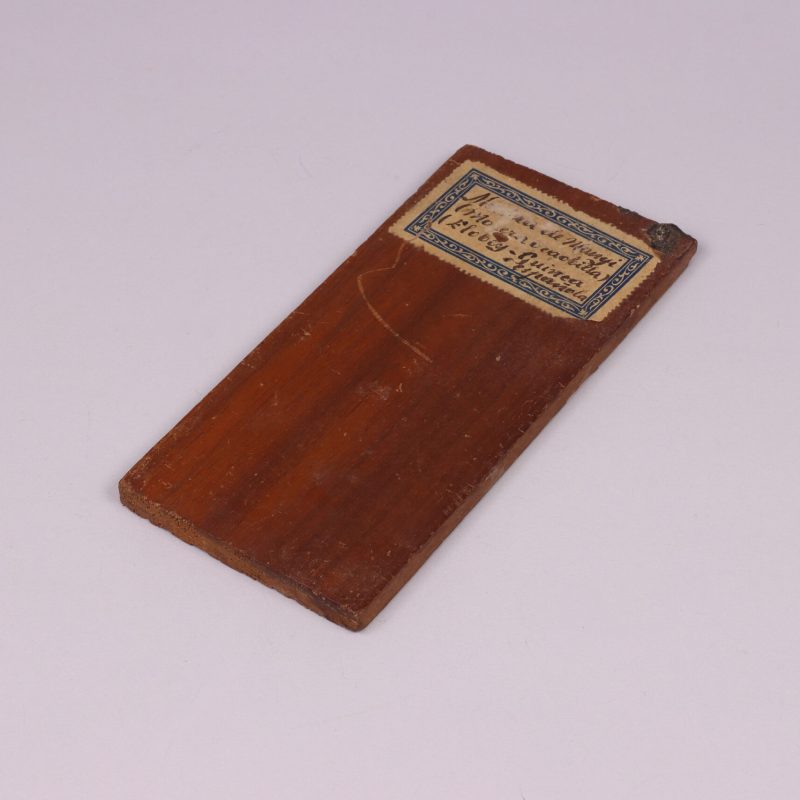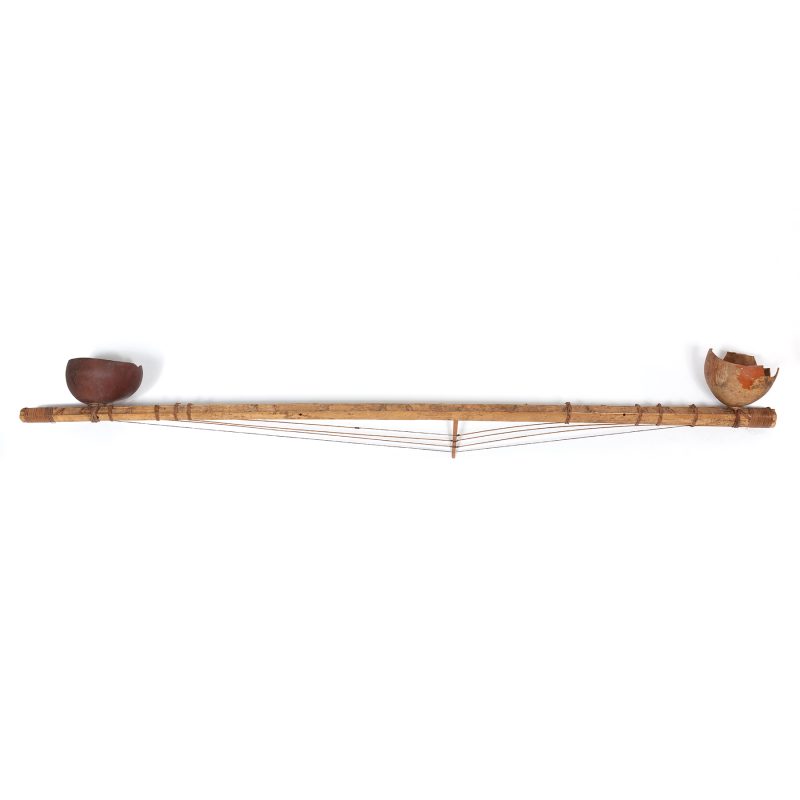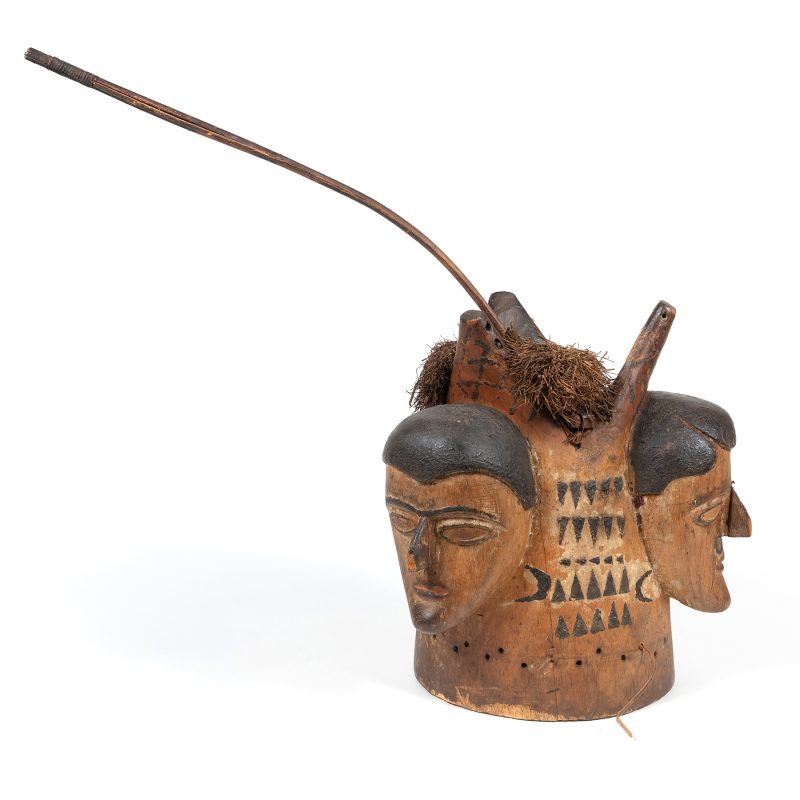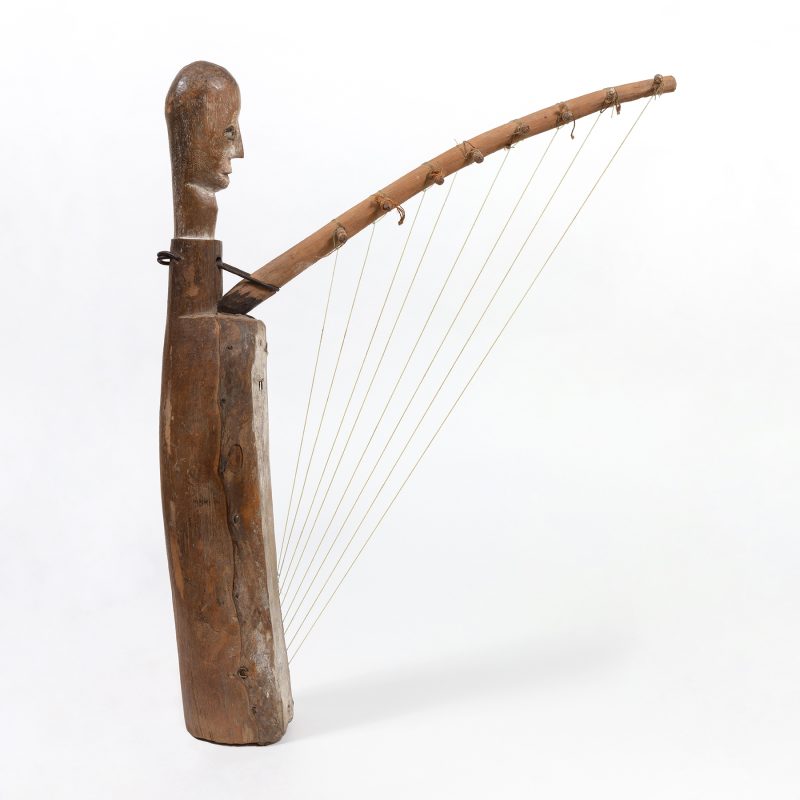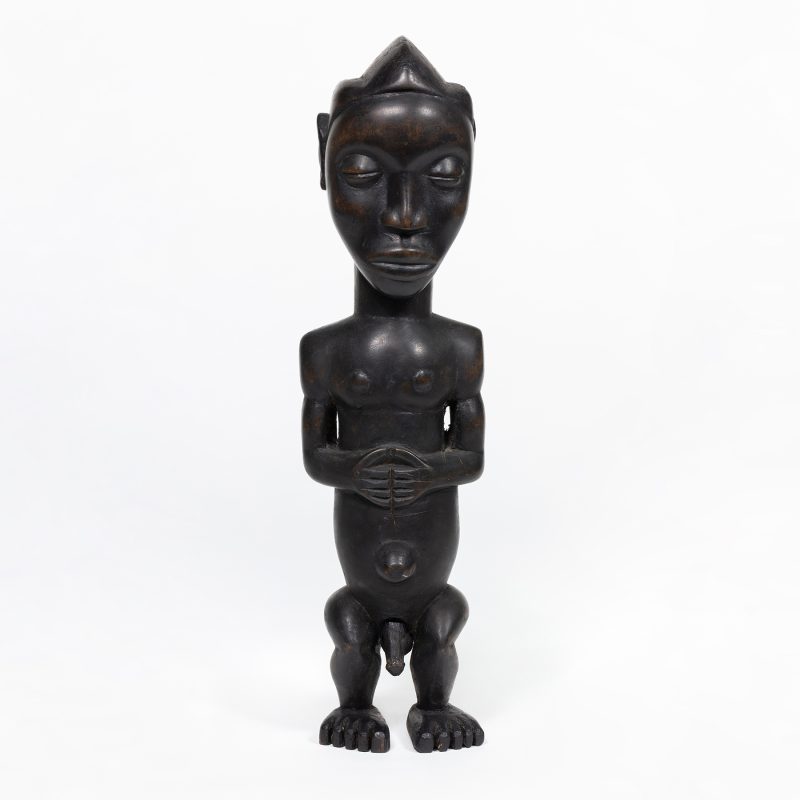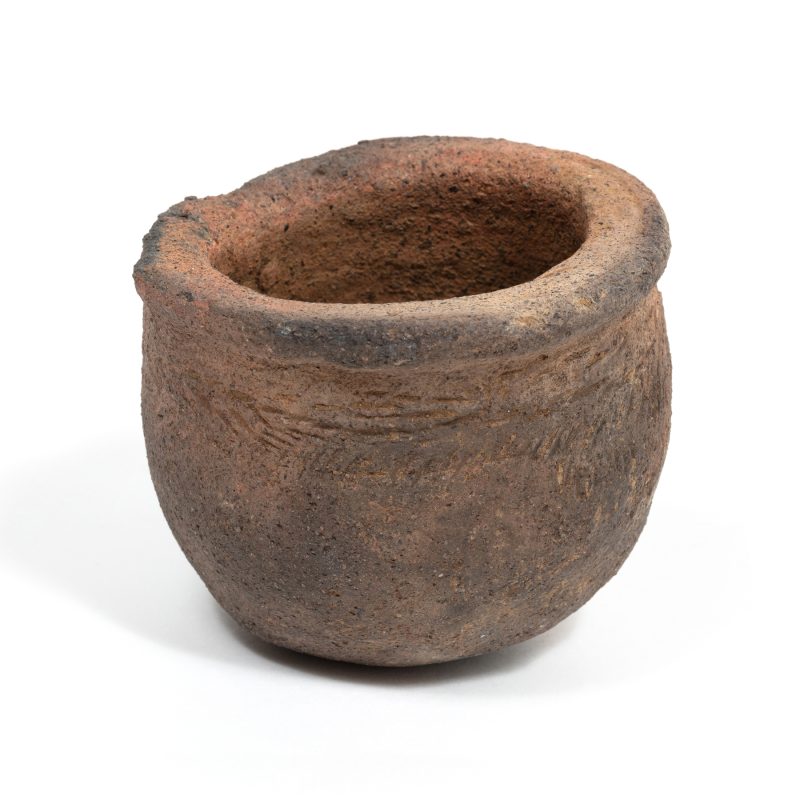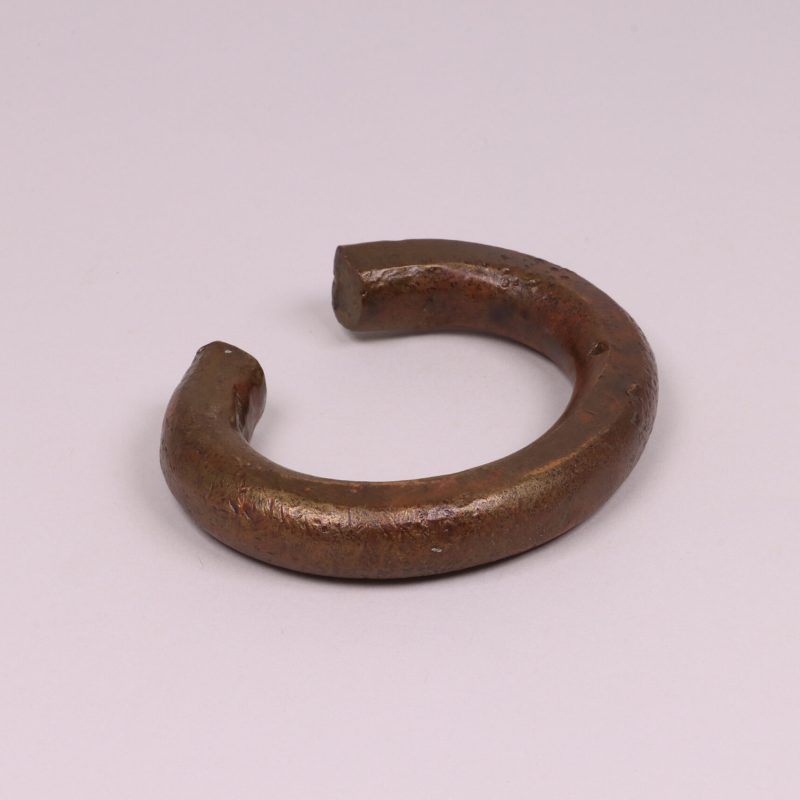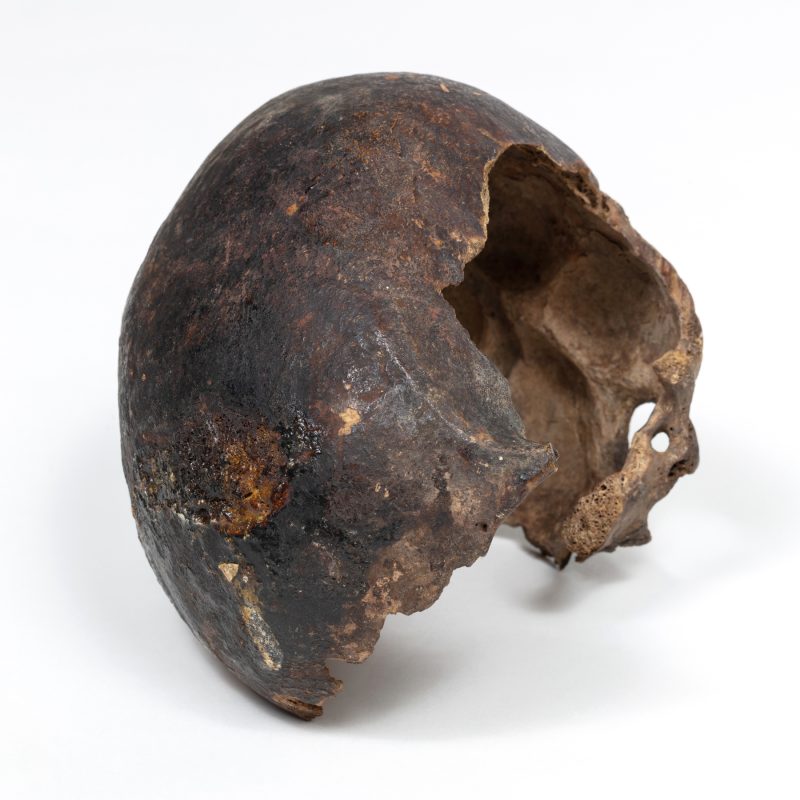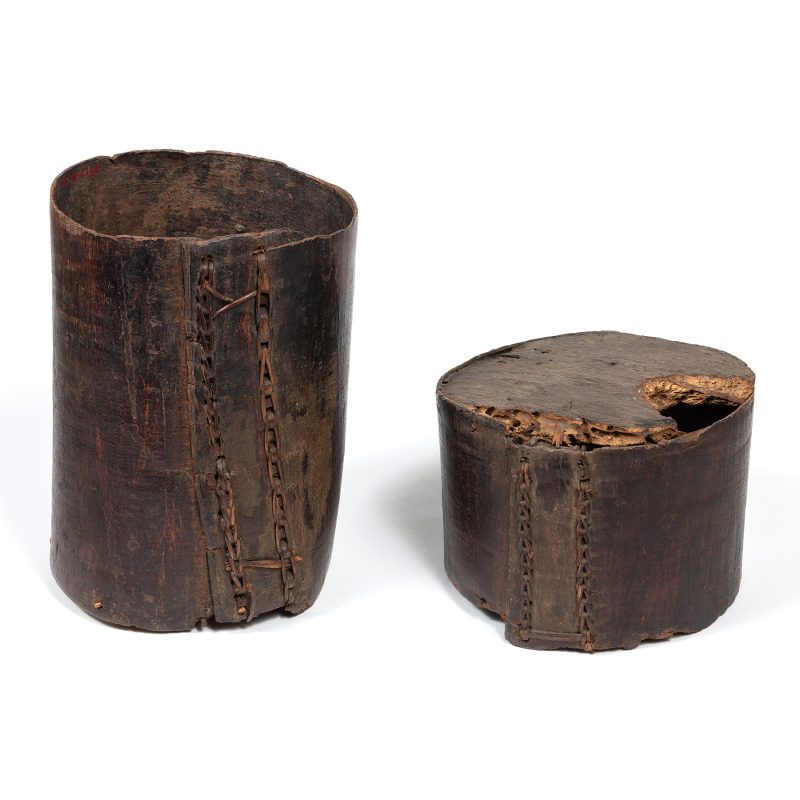Summary of results
This photograph shows the image of followers of a religion, the Bwiti, which was forbidden in Spanish Guinea, and for that reason was taken in Gabon. It exemplifies the contradiction between colonial practices and the anthropological discourse of the official institutions themselves (such as the Museo Etnológico y Colonial de Barcelona).
This photograph does not show a Bwiti ceremony, but a staging of it by two members of said worship in a temple of this religion.
It would be useful if all the photographic collections—which are not too difficult to scan—were to be shared online in order to make them accessible to the people of Equatorial Guinea.
Chronological reconstruction of provenance
Photograph taken around 16 April 1959 in Efulan – Efak. The place would be the chapel dedicated to the Bwiti leader and martyr Nguema Biban, ‘executed on this site in the time of Governor Pompiguant’, also called Tamamanga. August Panyella and Sabater Pi visited it to document the Bwiti. In 1955, the American anthropologist James W. Fernandez had met Sabater and Panyella in Barcelona. Fernandez had made some brief stays in Guinea and, in one of them, recorded part of a Bwiti session in Akurenam, accompanied by Sabater (with whom they would end up sharing a deep friendship, even spending summers together with their families in the Picos de Europa). It was probably Fernandez’s study that aroused the curiosity of the director of the Ethnological Museum for Bwiti, despite the fact that Panyella usually favoured more ‘authentic’ traditions.
Estimation of provenance
Photograph taken at a Bwiti temple in Gabon, with the collaboration of two members of the congregation who staged the ritual.
Possible alternative classifications
The photograph could be entitled ‘Recreation, in Gabon, of a Bwiti ceremony (a religion banned in Spanish Guinea)’, which is what it really is in this case.
Complementary sources
Archives:
CRAI UB – Belles Arts. Fons Sabater Pi:
E.1.1.2 Fotografies 81 a 91, sobre cerimònia de bwiti a Gabon (algunes d’elles còpies de les guardades al Museu).
B1 i B2 correspondència rebuda i enviada per Jordi Sabater Pi.
Museu Etnològic i de Cultures del Mon. Arxiu. Notes Museu Música. Notes Guinea-Fernando Poo i adreces. Fotos expedició. Notes i bibliografia I. Expedició Guinea. Vegeu <http://hdl.handle.net/10970/media/b4b78568-301c-b699-df0e-0e4e570a7a6e >.
Bibliography:
Aranzadi, J. (2016). Entrevista a James Fernandez. Éndoxa, 37, 79-95.
Bureau, R. (1996). Bocayé! Essai sur le bwiti fang. París: L’Harmattan.
Fernandez, J. W. (2019). Bwiti: An ethnography of the religious imagination in Africa. Princeton: Princeton University Press.
Gaulme, F. (1979). Le Bwiti chez les Nkomi: Association cultuelles et évolution historique sur le littoral gabonais. Journal des africanistes, 49(2), 37-87.
Mary, A. (1983). La naissance à l’envers: Essai sur le rituel du Bwiti-Fang au Gabon. París: L’Harmattan.
Świderski, S. (1965). Le Bwiti, société d’initiation chez les Apindji au Gabon. Anthropos, 60, 541-576.
Veciana, A. de (1958). La secta del bwiti en la Guinea Española. Madrid: CSIC-IDEA.

